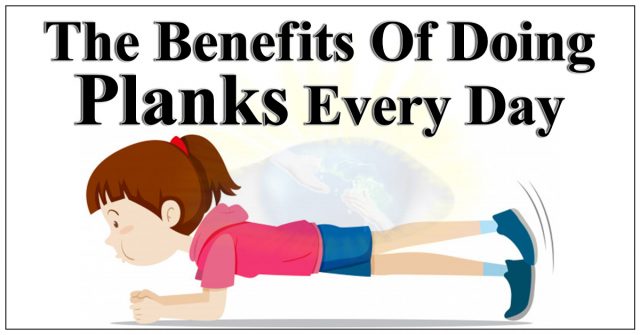Planks are a wonderful exercise that can be done within the comfort of your own home. While targeting the body’s core muscles, their benefits extend to also help the mind, and even one’s mood.
The core muscles of the body greatly affect one’s mobility, as they serve as the central link that connects the upper and lower body. Used in most forms of movement, the core muscles include the pelvic floor muscles, transversus abdominis, multifidus, internal and external obliques, rectus abdominis, erector spinae, and the diaphragm. The gluteus maximus, latissimus dorsi, and trapezius are considered secondary core muscles.
Harvard medical university states that, “Weak or inflexible core muscles can impair how well your arms and legs function… and that saps power from many of the moves you make.”
There are few exercises as effective at building your core as planking exercises.
When holding a planking position, the body is held up by the arms and biceps, toning and developing the arm muscles. The abdominals, glutes, and obliques are also engaged, as well as numerous muscles in the back and shoulders.
Planks Help With Back Support
Lower-back pain has been shown to affect up to 80% of Americans at some point in their lives. Strengthening core muscles can play a major role in ensuring a healthy back.

Planks Improve Balance And Stability
The plank is a static exercise where a single balanced position is held for between a few seconds to a few minutes. Continued practice both helps to improve one’s balance as well as to strengthen the core muscles that help one be able to balance.
“Bending to put on shoes or scoop up a package, turning to look behind you, sitting in a chair, or simply standing still — these are just a few of the many mundane actions that rely on your core and that you might not notice until they become difficult or painful,” Harvard Health Publishing states.
Planks Improve Posture
Strong core muscles are key for good posture, and good posture keeps the spine and inner organs aligned and in optimal condition. Maintaining an aligned posture also limits stress caused to the body as we age.
Planks Increase One’s Willpower
Mastering the ability to hold a plank position despite the challenging feelings that come up during physical training serve to improve one’s own personal willpower. These benefits can branch out into other areas of life, as one can learn to stick to their goals and decisions regardless of the difficult feelings and pain that comes up (to a healthy degree of course).
Dr. Brianne Grogan of FemFusion Fitness encourages fitness goers to progress their plank. Try starting by holding the plank for 30 seconds, and after it becomes easy to do, vary your position a little or begin holding the plank for a longer period of time.
Planks Can Boost Your Metabolism
Planks tend to burn more calories than both crunches or sit-ups.
Planks Can Improve Your Mood
Planking uses and stretches the muscles in the body most prone to tension and holding stress. By practicing a planking routine, you stretch your legs, thighs, back, and shoulders, thereby releasing stored tension and stress in the body. This release of stress helps to calm the brain’s fight-or-flight response that is associated with tension and associated pains.
To Perform A Plank:
1. Lay down facing the floor, in a “pre-pushup” position.
2. Keep your lower and upper body straight (like a board), and lift your body up using your forearms, keeping the elbows to the hands of your arms on the floor. The upper arm and forearm should form a 90-degree angle.
3. The lower body should be held up by the toes, and keep your body as straight as possible.
4. Engage your abs by pulling in your tummy towards your spine.
5. Hold this position for 30 seconds to 5 minutes; whichever feels comfortable to you.
Remember when practicing the plank, that posture and holding the position correctly is more important than hold long you choose to hold it for.
The plank is a wonderfully healthy exercise, but it’s not necessarily easy! Don’t be discouraged when first starting. Keep practicing and make sure to stretch beforehand. Each day you practice, your core muscles will get a little bit stronger, and you’ll begin receiving the wonderful benefits of planking.
The following 1-minute video shows how to begin doing planks:
Have you practiced planking before?
Let us know in the comments.
Have a wonderfully healthy day.
You are Loved.
See Also: This 28 Day Planking Challenge Can Help Tone Up And Tighten Your Tummy


















